21 results
Common Core 7.RP.A.2 laboratories
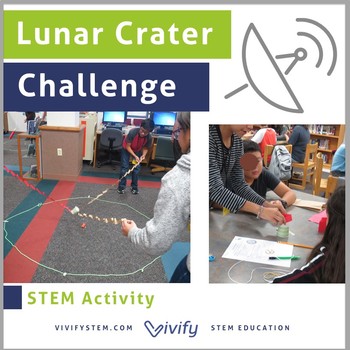
STEM Space Moon Crater Design Challenge (Engineering Design Process)
Can your team of astronauts work together to land a rover in the center of a crater on the Moon? This engaging STEM challenge is a fun way to incorporate the engineering design process into your classroom or afterschool program! Students use the engineering design process and explore the forces of motion to place a ball in a cup at the center of a 6 foot diameter circle without entering the circle. This challenge represents placing a NASA rover into the middle of the Apollo lunar crater for expl
Subjects:
Grades:
4th - 9th, Adult Education
Types:
NGSS:
3-5-ETS1-3
, 3-5-ETS1-1
, 3-5-ETS1-2
Also included in: Space STEM Starter Challenges MEGA Bundle: Middle School
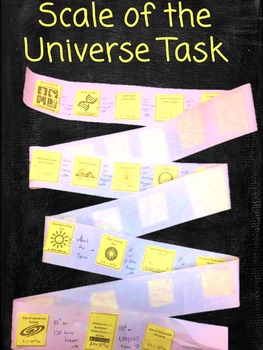
Scale of the Universe Performance Task Activity
This activity is designed to get students to grasp the understanding of the enormous size of our universe.Skills practiced:* Scientific notation* Metric units and conversions* Proportional thinking* ModelingStudents use the size information found on each of the cards, to arrange various objects in the universe in order from smallest to largest. Students will practice converting numbers into scientific notation, and comparing scientific notation values. Each of the 34 cards gives the name of
Grades:
5th - 12th
Types:
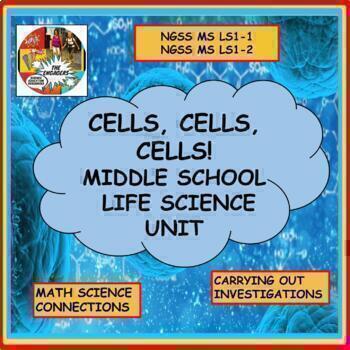
"Cells, Cells, Cells"! MS-LS1-1 and MS-LS1-2 An entire unit for middle school
This is a highly engaging unit for middle school students (Google and pdf versions) which meets the NGSS standards listed further below. It is aligned with the philosophy of the NGSS including a focus on deeper understanding of content as well as application of content, student performance expectations, and integration with mathematics. This unit is classroom tested and ready for immediate implementation.Included in this unit package are google slides for presentation to the class (74 slides),
Grades:
6th - 9th
NGSS:
MS-LS1-2
, MS-LS1-1

Similar Figures Lab
In this lab, students work through 12 stations. At each station, there are 2 similar figures. Students must find the length of a missing side on one of the shapes. Also included is a student worksheet on which students must write a proportion for each problem.
Subjects:
Grades:
6th - 8th
Types:
CCSS:

Bottle Flipping: Math in Motion
As long as the students are going to flip bottles, let’s find the math in it. This measurement, data, and technology activity will keep the students so engaged that they’ll forget that they are learning rigorous math!As a “S.T.E.M. in Action” lesson, you’ll find all four components of a true S.T.E.M. curriculum represented.Science — Students measure mass and compare the behavior of the liquids as they flip the bottle.Technology — Students can build a spreadsheet and use it to collect and aggrega
Subjects:
Grades:
5th - 8th
Types:
NGSS:
MS-ETS1-4
, 3-5-ETS1-1
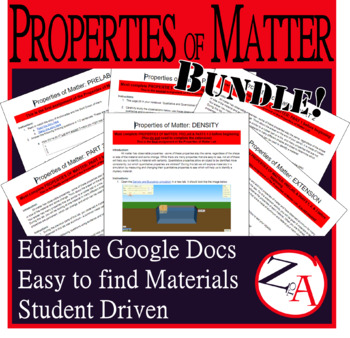
Properties of Matter Lab BUNDLE
Interested in PrBL/PBL? Want to get students engaged in learning about matter while still holding them accountable?This lab introduces some of the properties of matter and gives students an overview of qualitative and quantitative observations, intrinsic and extrinsic properties, and density and buoyancy. Students use readings, observations, lab work, and simulations to explore properties of matter.The lab is split into 5 parts along with one lab-based extension. Students can work through the la
Subjects:
Grades:
7th - 9th
Types:
NGSS:
5-PS1-3
, MS-PS1-2
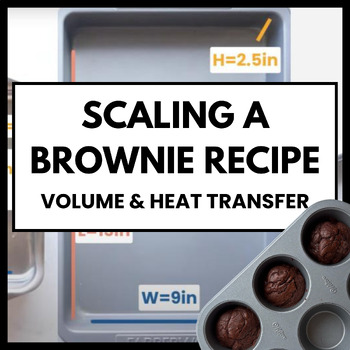
Scaling a Brownie Recipe: Volume, Units, & Heat Transfer
In this 4-6 day lesson, students explore volume, unit conversions, and the relationship between energy transfer and mass by comparing pan sizes and scaling a brownie recipe. We provide multiple options include brownie box mix recipes to make this as accessible as possible!Objectives:- Compare different size pans by exploring ways to calculate volume and using ratios - Learn how to scale up or down a recipe by using unit conversions and application of ratios, multiplication, and division - Explor
Subjects:
Grades:
6th - 9th
Types:
NGSS:
MS-PS3-4
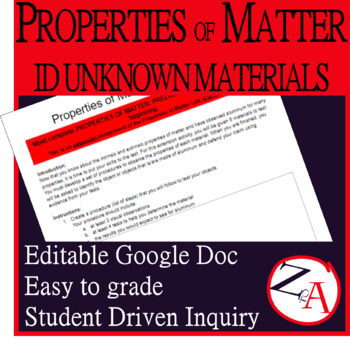
Properties of Matter: Identifying Unknown Materials (EXTENSION)
Interested in PrBL/PBL? Want to get students engaged in learning about matter while still holding them accountable?This Extension Lab allows students to use their newfound knowledge of the properties of matter to identify unknown materials.Students write their own procedures and develop their own tests to identify which substances are aluminum!This extension lab is designed to let students practice and apply their knowledge of the properties of matter. It is an extension activity in a 5 part lab
Subjects:
Grades:
8th - 9th
Types:
NGSS:
5-PS1-3
, MS-PS1-2
Also included in: Properties of Matter Lab BUNDLE
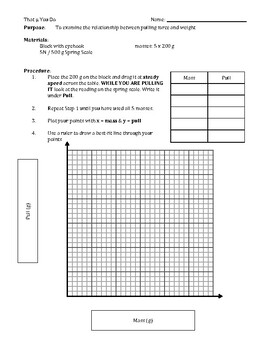
Graphing Activity - That Mu You Do - With Key
I do this activity with my freshman pre-algebra class to have them get experience with graphing "real data" points, then finding the slope of the "best fit line" and making meaning of what they did. A regular question in math class is "when am I ever going to use this?" This activity gives them something tactile to do with their hands that then makes the data points and the graph itself have real meaning for them and not just be numbers / dots on the page. I follow this activity up with "Graphin
Grades:
6th - 9th
Types:
Also included in: Physics Bundle
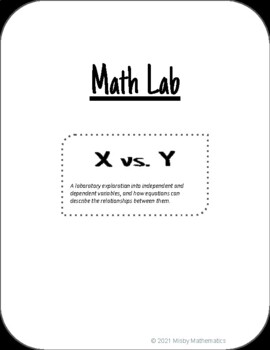
X vs Y: A Variable Recording and Graphing Lab
A 3 day to week long laboratory exploration into independent and dependent variables, and how equations like y=mx+b can describe the relationships between them.After breaking down the lab's instructions, students will get to choose their own x and y variables and then come up with a procedure for gathering data. Depending on how outgoing/creative they are, collecting the data for this lab can be a blast! Once they have 20 (x,y) samples, they will graph them and draw a line that fits the data. Th
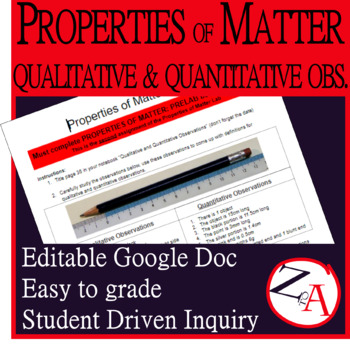
Properties of Matter: Qualitative & Quantitative Observation (PART 1)
Interested in PrBL/PBL? Want to get students engaged in learning about matter while still holding them accountable?This Lab (Part 1) introduces students to Qualitative and Quantitative observations with an inquiry approach.Students look at observations made by another student, then use those observations to define qualitative and quantitative and to make their own observations!This part of the lab is designed to get students ready to observe the properties of matter. It is the second activity in
Subjects:
Grades:
8th - 9th
Types:
NGSS:
5-PS1-3
, MS-PS1-2
Also included in: Properties of Matter Lab BUNDLE
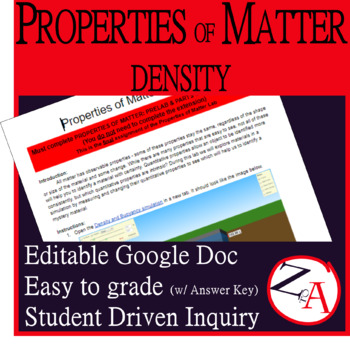
Properties of Matter: Inquiry Finding Density & Observing Buoyancy (DENSITY)
Interested in PrBL/PBL? Want to get students engaged in learning about matter while still holding them accountable?This Lab introduces students to density as an intrinsic property (at standard pressure and temperature).Students use a simulation to explore the relationship between volume, mass, density, and buoyancy with an inquiry approach.This lab is designed to engage students in learning about density as a property of matter. It is the fifth activity in a 5 part lab.This Lab also works well a
Subjects:
Grades:
8th - 9th
NGSS:
5-PS1-3
, MS-PS1-2
Also included in: Properties of Matter Lab BUNDLE
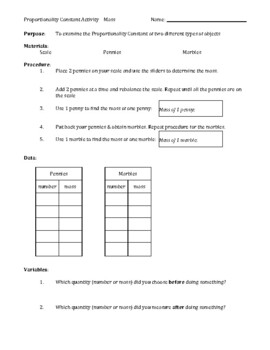
Graphing - Mass of Marbles & Pennies: Notes, Proportionality Constant, Slope KEY
This is a set of notes + activity focused on teaching students to connect a data table to a graph to slope of a line through the idea of 'Constant of Proportionality'. Students are to find the total mass of sets of pennies and marbles and then graph Mass vs Number. From a line on the graph, they will find the slope of the line and connect it to the mass of a single penny (and marble) in the analysis questions. This is the first in a series of 4 activities that focus on linear relationships betwe
Subjects:
Grades:
6th - 9th
Types:
Also included in: Graphing - Linear relationship activities
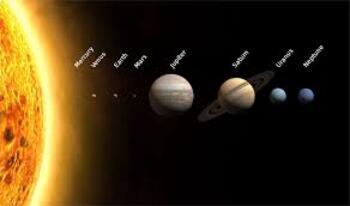
Build A Scale Model of the Solar System
Objective: create a scale model of the solar system (planets only) showing -Part 1: The relative sizes (diameters) of the planets -Part 2: The relative distances of the planets from the sunMaterials 1 piece of paper [100cm x 50cm] scrap paper to cut upscissors metric ruler online resourcescompass mechanical pencil
Subjects:
Grades:
6th - 9th
Types:
NGSS:
MS-ETS1-2
, MS-ETS1-4
, MS-ESS1-3
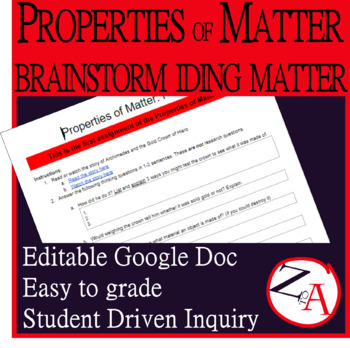
Properties of Matter: Brainstorm Identifying Matter (PRELAB)
Interested in PrBL/PBL? Want to get students engaged in learning about matter while still holding them accountable?This Prelab introduces students to the story of Archimedes and the Golden Crown of Hiero. Students brainstorm how they might figure out if a crown was made of solid gold - without destroying it!This prelab is designed to get students ready to learn about the properties of matter. It is the first activity in a 5 part lab.This prelab can also work as a stand alone assignment to introd
Subjects:
Grades:
8th - 9th
Types:
NGSS:
5-PS1-3
, MS-PS1-2
Also included in: Properties of Matter Lab BUNDLE

Properties of Matter: Thinking Questions (PART 3)
Interested in PrBL/PBL? Want to get students engaged in learning about matter while still holding them accountable?This Lab introduces students to intrinsic and extrinsic properties of matter.Students brainstorm how they might identify their Mystery Material from Part 2 based on its properties!This part of the lab is designed to get students thinking about intrinsic properties of matter. It is the fourth activity in a 5 part lab.This part of the lab can also work as a stand alone assignment to h
Subjects:
Grades:
8th - 9th
Types:
NGSS:
5-PS1-3
, MS-PS1-2
Also included in: Properties of Matter Lab BUNDLE

Properties of Matter: Observing a Mystery Material (PART 2)
Interested in PrBL/PBL? Want to get students engaged in learning about matter while still holding them accountable?This Lab introduces students to the Mystery Material (aluminum)- they then practice taking many different types of qualitative observations.Students travel to 3 stations to observe different properties of the Mystery Material.This part of the lab is designed to get students practicing observations and starting to identify properties of matter. It is the third activity in a 5 part la
Subjects:
Grades:
8th - 9th
Types:
NGSS:
5-PS1-3
, MS-PS1-2
Also included in: Properties of Matter Lab BUNDLE

The Hunger Games Lesson Plan
MS-LS4-6: Use mathematical representations to support explanations of how natural selection may lead to increases and decreases of specific traits in populations over time.Driving Question:How can we observe evolution through natural selection in the classroom?Anchoring Phenomenon:Our population varies in its feeding abilities (forks, tweezers, and spoons). Our food source has become limited to beans. Over several generations, which traits will increase in the population, and which traits will d
Grades:
8th - 12th
Types:
NGSS:
HS-LS4-3
, MS-LS4-6
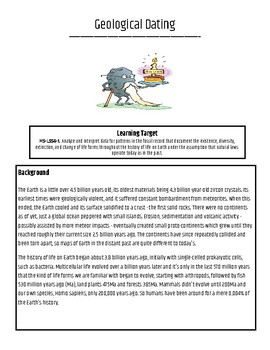
Geological Dating
MS-LSS4-1. Analyze and interpret data for patterns in the fossil record that document the existence, diversity, extinction, and change of life forms throughout the history of life on Earth under the assumption that natural laws operate today as in the past.This lesson is a fun 2-3 day lesson for middle school students to help build understanding of relative dating. Look at my website for free resources and a more detailed explanation of this lesson. www.academickingdom.com
Subjects:
Grades:
6th - 12th
Types:
CCSS:
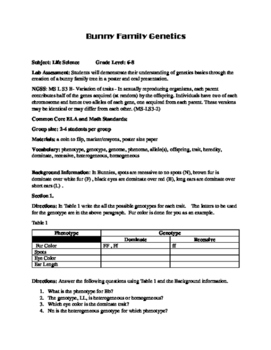
Bunny Family Genetics
This is lab assessment for genetics. This assignment can be used after other online resources such as Spongebob Genetics. Students create a bunny family based on four traits to demonstrate what they learned about genetic basics. The activity takes 2-3 45min class periods to complete depending on oral presentations. Common core standards are not included in lesson plan. How you want them to present their written format will dictate your Common Core ELA standards. The project is broken int
Subjects:
Grades:
5th - 7th
Types:
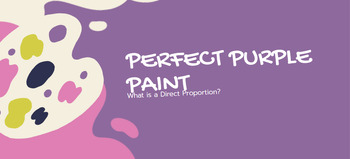
Perfect Purple Paint Group Task
In this engaging color-mixing activity, students collaborate in heterogeneous groups to recreate the perfect purple paint discovered for a special room project. Originating from an 8 oz (1 cup) container, the challenge is to scale up the paint for larger 16 oz (2 cups) and 32 oz (4 cups) containers. Using red and blue food coloring, students explore ratios to achieve the identical shade, documenting their findings on a graph. The hands-on experiment encourages teamwork, critical thinking, and pr
Subjects:
Grades:
5th - 8th
Types:
Showing 1-21 of 21 results

